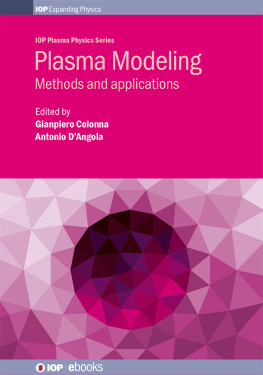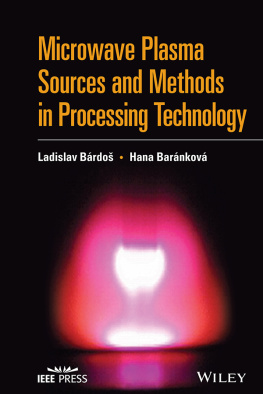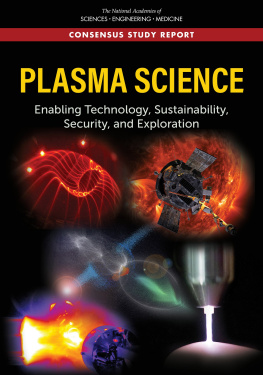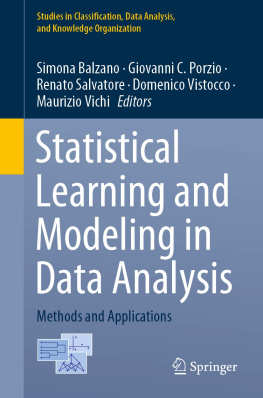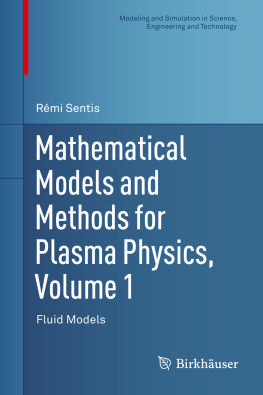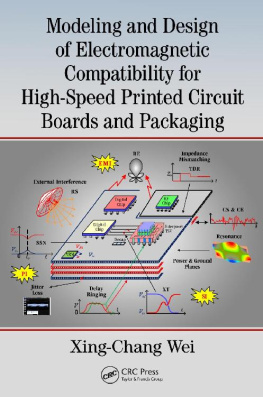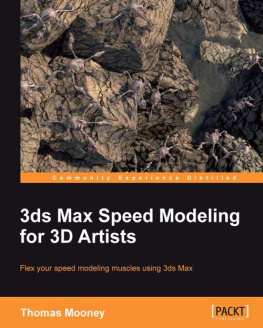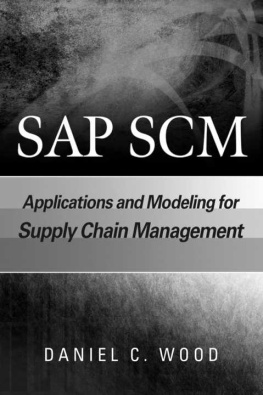Gianpiero Colonna - Plasma Modeling Methods and Applications
Here you can read online Gianpiero Colonna - Plasma Modeling Methods and Applications full text of the book (entire story) in english for free. Download pdf and epub, get meaning, cover and reviews about this ebook. year: 2016, publisher: IOP Science, genre: Children. Description of the work, (preface) as well as reviews are available. Best literature library LitArk.com created for fans of good reading and offers a wide selection of genres:
Romance novel
Science fiction
Adventure
Detective
Science
History
Home and family
Prose
Art
Politics
Computer
Non-fiction
Religion
Business
Children
Humor
Choose a favorite category and find really read worthwhile books. Enjoy immersion in the world of imagination, feel the emotions of the characters or learn something new for yourself, make an fascinating discovery.
- Book:Plasma Modeling Methods and Applications
- Author:
- Publisher:IOP Science
- Genre:
- Year:2016
- Rating:4 / 5
- Favourites:Add to favourites
- Your mark:
- 80
- 1
- 2
- 3
- 4
- 5
Plasma Modeling Methods and Applications: summary, description and annotation
We offer to read an annotation, description, summary or preface (depends on what the author of the book "Plasma Modeling Methods and Applications" wrote himself). If you haven't found the necessary information about the book — write in the comments, we will try to find it.
Plasma Modeling Methods and Applications — read online for free the complete book (whole text) full work
Below is the text of the book, divided by pages. System saving the place of the last page read, allows you to conveniently read the book "Plasma Modeling Methods and Applications" online for free, without having to search again every time where you left off. Put a bookmark, and you can go to the page where you finished reading at any time.
Font size:
Interval:
Bookmark:

Methods and Applications
Gianpiero Colonna
Consiglio Nazionale delle Ricerche (CNR), PLASMI Lab at NANOTEC, Bari, Italy
Antonio DAngola
Scuola di Ingegneria, Universit della Basilicata, Potenza, Italy and
Consiglio Nazionale delle Ricerche (CNR), PLASMI Lab at NANOTEC, Bari, Italy
IOP Publishing, Bristol, UK
IOP Publishing Ltd 2016
All rights reserved. No part of this publication may be reproduced, stored in a retrieval system or transmitted in any form or by any means, electronic, mechanical, photocopying, recording or otherwise, without the prior permission of the publisher, or as expressly permitted by law or under terms agreed with the appropriate rights organization. Multiple copying is permitted in accordance with the terms of licences issued by the Copyright Licensing Agency, the Copyright Clearance Centre and other reproduction rights organisations.
Permission to make use of IOP Publishing content other than as set out above may be sought at permissions@iop.org.
Gianpiero Colonna and Antonio DAngola have asserted his right to be identified as the author of this work in accordance with sections 77 and 78 of the Copyright, Designs and Patents Act 1988.
ISBN 978-0-7503-1200-4 (ebook)
ISBN 978-0-7503-1201-1 (print)
ISBN 978-0-7503-1202-8 (mobi)
DOI 10.1088/978-0-7503-1200-4
Version: 20161201
IOP Expanding Physics
ISSN 2053-2563 (online)
ISSN 2054-7315 (print)
British Library Cataloguing-in-Publication Data: A catalogue record for this book is available from the British Library.
Published by IOP Publishing, wholly owned by The Institute of Physics, London
IOP Publishing, Temple Circus, Temple Way, Bristol, BS1 6HG, UK
US Office: IOP Publishing, Inc., 190 North Independence Mall West, Suite 601, Philadelphia, PA 19106, USA
IOP Plasma Physics Series
Richard Dendy
Culham Centre for Fusion Energy and the University of Warwick, UK
Uwe Czarnetzki
Ruhr-University Bochum, Germany
About the Series
The IOP Plasma Physics ebook series aims at comprehensive coverage of the physics and applications of natural and laboratory plasmas, across all temperature regimes. Books in the series range from graduate and upper-level undergraduate textbooks, research monographs and reviews.
The conceptual areas of plasma physics addressed in the series include:
- Equilibrium, stability and control
- Waves: fundamental properties, emission, and absorption
- Nonlinear phenomena and turbulence
- Transport theory and phenomenology
- Laser-plasma interactions
- Non-thermal and suprathermal particle populations
- Beams and non-neutral plasmas
- High energy density physics
- Plasma-solid interactions, dusty, complex and non-ideal plasmas
- Diagnostic measurements and techniques for data analysis
The fields of application include:
- Nuclear fusion through magnetic and inertial confinement
- Solar-terrestrial and astrophysical plasma environments and phenomena
- Advanced radiation sources
- Materials processing and functionalisation
- Propulsion, combustion and bulk materials management
- Interaction of plasma with living matter and liquids
- Biological, medical and environmental systems
- Low temperature plasmas, glow discharges and vacuum arcs
- Plasma chemistry and reaction mechanisms
- Plasma production by novel means
To Mariachiara, Gerardina, Michelangelo and Maria Teresa, our future.
In the last few years, research activity in the fields of plasma physics and chemistry has grown exponentially, not only focusing on fundamental aspects, but also on industrial applications. Due to its inherent complexity, both experiments and numerical modeling are necessary to fully characterize plasma systems. The most commonly used numerical simulation techniques for plasma modeling include fluid dynamics, kinetic, and hybrid models. These simulation models differ significantly in terms of their principles, strengths, and limitations. Kinetic models, such as particle-in-cell with Monte Carlo collisions, are used for non-equilibrium systems, and fluid models are employed for faster computations, reducing the accuracy. Hybrid models provide balance between precision and efficiency.
The golden age of plasma modeling occurred in the 1980s90s, when several research groups across the world developed theoretical and numerical approaches to investigate plasma behaviors. Currently, plasma modeling mainly addresses technological applications and, due to the complexity of systems, commercial multi-purpose codes are often used. These numerical codes are based on the fluid dynamics approach, describing realistic discharge geometries. COMSOL Multiphysics and ANSYS Fluent are examples of very popular commercial general-purpose software platforms, based on advanced numerical methods, for modeling and simulating physics-based problems. They are suitable for the design and development of optimized products by researchers and engineers working for leading technical enterprises, research laboratories, and universities. In strong non-equilibrium cases it is necessary to calculate the energy distribution function of particles. Kinetic modeling is recurrent in gas discharge investigations due to the non-equilibrium energy distribution of charged particles, which are not representable by the Maxwell distribution function, with abrupt changes in the slope, dumps and bumps, affecting the macroscopic properties of the plasma. In this context, a critical aspect is to determine the actual distribution function of free electrons, solving the Boltzmann equation. The electron energy distribution directly affects the plasma composition, also inducing non-equilibrium in internal states which, in turn, influences the electron gas, creating a strong synergy between the different plasma components. BOLSIG+, originally developed in the LAPLACE laboratory in Toulouse, is an example a freeware non-commercial code for the numerical solution of the Boltzmann equation for free electrons in weakly ionized gases in the framework of the two-term approximation.
Several non-commercial codes have been developed by research groups to simulate one- or two-dimensional problems and suitable plasma applications. It is worth mentioning nonPDPSIM, developed by the Kushner research group, which is is a two-dimensional computational platform that solves, using the hybrid approach, transport equations for charged and neutral species, Poissons equation for the electric potential, the electron energy conservation equation for the electron temperature, radiation transport and NavierStokes equations for the neutral gas flow, coupled with a Monte Carlo solver for the electron energy distribution function. The two-dimensional platform has three major modules addressing plasma dynamics, fluid dynamics, and surface kinetics, and is implemented on an unstructured mesh to enable resolution of a large dynamic range in space.
The aim of this book is to present a review of the different approaches that can be adopted to model a plasma, giving a comprehensive bibliography for students and researchers who want to start a project in plasma modeling, orienting the reader toward the choice of a suitable numerical method. The chapters in this book have been written by experienced researchers in the field, who have developed advanced theoretical models and high-performance numerical codes. The theoretical models used in commercial or freeware codes are described throughout this book, guiding students, researchers, and engineers in choosing the proper approach for the problem under investigation. This book describes the theoretical and numerical approaches that the plasma community currently uses to investigate plasmas, and thus can help the reader in creating a customized in-house code, particularly when commercial or freeware codes cannot be used.
Font size:
Interval:
Bookmark:
Similar books «Plasma Modeling Methods and Applications»
Look at similar books to Plasma Modeling Methods and Applications. We have selected literature similar in name and meaning in the hope of providing readers with more options to find new, interesting, not yet read works.
Discussion, reviews of the book Plasma Modeling Methods and Applications and just readers' own opinions. Leave your comments, write what you think about the work, its meaning or the main characters. Specify what exactly you liked and what you didn't like, and why you think so.

